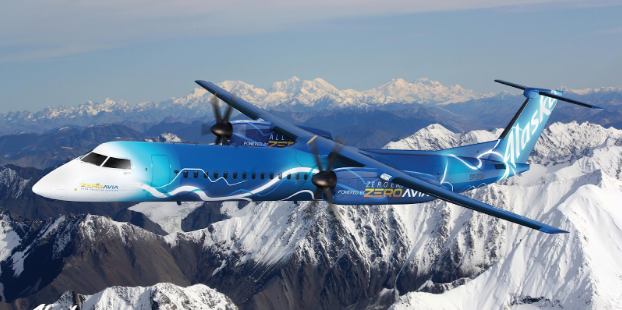
Five hundred miles in a 50-seat, electrically powered aircraft: It's an audacious goal but the founder of ZeroAvia, a pioneer in electric powertrains for aviation, believes he can achieve it. What's more, the company has the expertise and the financial backing to make it happen.
The Growing Climate Impact of Air Travel
As the world strives to decarbonize, the aviation sector finds itself in the crosshairs. Air travel is currently responsible for 2% of global CO2 emissions, and its impact looks set to grow as other industries shrink their carbon footprints.
Aviation faces two challenges: More people want to fly more often, and it seems very hard to make aircraft emission-free.
To that first point, the Air Transport Action Group (ATAG) forecasts passenger numbers in 2050 will be 2.5 times what they were in 2019. And to the second point,the environmental impact of air travelis more than just CO2 emissions. Releasing CO2 plus NOx (nitrogen oxides common in air pollution), water vapor, and particulates at high altitude magnifies their effect as greenhouse gases. This is why, if nothing is done, some experts predict aviation could be responsible for half of all human-caused impacts on the climate by 2050.
ZeroAvia's Approach to Zero Emissions
Steps are being taken. Energy providers and aircraft operators are exploring the potential of sustainable aviation fuels (SAF). These are made from non-fossil fuel sources, primarily corn grain and oilseed. In parallel, aircraft manufacturers are researching electrification. Neither avenue is without challenges.
Burning SAF in engines lowers greenhouse gas emissions but does not eliminate them entirely. They may also require additional land for planting and harvesting.
ZeroAvia vice president for Europe, Sergey Kiselev, addressed this issue in a recent Q&A session with The Engineer magazine. "Sustainable aviation fuels (SAFs) are limited in availability and still generate harmful climate emissions," he said, continuing, "and current and expected battery technologies do not meet the weight-sensitive performance needs of aerospace."
In response, ZeroAvia is focused on "developing hydrogen-electric power trains, which use low-carbon hydrogen in a fuel cell system to generate electricity, which in turn is used to power aircraft without any emissions besides water vapor."
Why Hydrogen?
Hydrogen can be burned, like gasoline or jet fuel, or used in a fuel cell to generate electricity. ZeroAvia chose fuel cells over combustion because, while burning doesn't release carbon dioxide, it still gives off NOx.
A fuel cell works by combining hydrogen with oxygen. This process strips protons from hydrogen molecules, which forces electrons to flow in a circuit. With a large enough cell, there's sufficient current to power a motor. Instead of NOx, the only by-product is water.
Hydrogen is also a very efficient source of energy. One measure of comparison is energy density. This is the amount of energy contained within a kilo or pound of the material. One kilo of hydrogen holds three times the energy of a kilo of jet fuel and four times that of a lithium-ion battery. This means an aircraft powered by hydrogen doesn't need to carry as much weight as an aircraft powered by jet fuel.
From a safety perspective, hydrogen is an improvement over jet fuel. It needs more oxygen to ignite than does gasoline, and it burns at a lower temperature. Furthermore, being lighter than air, hydrogen gas dissipates quickly if released, unlike fuel vapor.
A Retrofit Solution
Aircraft can last 20 or 30 years. Most of those leaving the factories of Boeing, Airbus, or the smaller manufacturers today will still be in service in 2050. This means that although companies are working on all-electric aircraft, it will be a long time before they significantly impact the aviation sector's greenhouse gas emissions.
But that truth doesn't sit well with theeco-friendlyZeroAvia. The startup intends to retrofit existing aircraft with an electric drivetrain. This comprises an electric motor plus fuel cell, power and thermal management systems, compressors, and storage tanks for gaseous or liquid hydrogen. With less development effort and fewer certification challenges, it's an approach that promises to be faster and less expensive.
The Hydrogen Storage Challenge
While energy density makes hydrogen attractive, the gas comes with a challenge. Compressing it to a manageable volume requires holding it under extremely high pressure.
Discussing the issue, Kiselev noted, "storing hydrogen on board an aircraft to power longer distance flights requires innovative storage solutions that differ from the technologies and approaches used for existing jet fuels."
Short flights need hydrogen that can be stored in compressed gaseous form. However, increasing range requires more hydrogen, which needs more storage volume. ZeroAvia intends to solve this problem by moving to liquid hydrogen. This requires very low temperatures, as hydrogen boils at -423 F (-253 C). (Pressurization raises this, but extremely low temperatures are still needed.)
Kiselev指出,“ZeroAvia正在与高度novative companies to engineer the solutions to this challenge."
ZeroAvia's Electrified Powertrain Development Program
ZeroAvia is a new company with operations in the U.K. and the U.S. Founded in 2017 by entrepreneur and pilot Val Miftakhov, it quickly attracted the talent andfunding necessaryto prove the fuel cell concept and demonstrate technical feasibility. Undoubtedly, it helped that Miftakov is no newcomer to electrification and green energy. His previous venture was eMotorWerks, an electrification company that he grew from scratch and subsequently sold to Enel.
After a period of stealth development, in 2019, at an airfield in Hollister, California, Miftakov demonstrated an electrically powered Piper Matrix aircraft that used batteries. A year later, ZeroAvia repeated the achievement in a modified Piper Malibu six-seater aircraft flying from Cranfield in the U.K.
Having proven an electric powertrain, the company was ready for the next step. On Sept. 25, 2020, ZeroAvia became the first company in the world to demonstrate hydrogen fuel cell-powered flight. The eight-minute flight was performed at the Cranfield, U.K., airfield using a converted Piper Malibu.
A more powerful drivetrain is currently under development. Named ZA2000, this is expected to produce 2,000kW of power. This will go into a 19-seater aircraft that ZeroAvia expects to have certified in 2024. From here the plan, which ZeroAvia calls HyFlyer II, is to jump up to a 50-seataircraft with a range of 500 milesin 2026.
Hydrogen Power Will Require Airport Infrastructure
Recognizing that fueling will be a concern for aircraft operators, ZeroAvia has included this in its planning and development efforts. For gaseous hydrogen, it demonstrated its Hydrogen Airport Refueling Ecosystem (HARE) alongside the six-seater Piper aircraft. This combines on-site electrolytic hydrogen production with mobile storage and aircraft fueling.
Addressing the need for liquid hydrogen refueling, ZeroAvia is also working on Liquid Hydrogen Airport Refueling Ecosystem (LHARE).
ZeroAvia's Partners and Funding
Developing a new aircraft powertrain technology is a big undertaking. To ensure success ZeroAvia has partnered with aerospace and airline companies and attracted funding from numerous sources.
最重要的一个合作伙伴是三菱,through their recently acquiredRegional Jet operation. MHIRJ is currently supporting the development of the 600kW ZA600 hydrogen fuel cell system that was ground-tested in July 2021.
Alaska Air Group is another partner to have made a major commitment to the program. Alaska is collaborating with ZeroAvia on a retrofit solution for the 76-seat De Havilland Dash 8-400 turboprop. This will use the ZA2000 power train providing between 2,000 and 5,000kW and will be deployed in as many as 50 aircraft.
On Dec. 13, yet another high-profile partner, United Airlines announced it had purchased an equity stake in ZeroAvia, in addition to plans to order 100 of ZeroAvia's hydrogen-electric engines and that it planned to retrofit them into its fleet by 2028.
Other substantial investments have come from British Airways, the Amazon Climate Pledge Fund, and Bill Gates' Breakthrough Energy Ventures. In addition, the U.K.governmenthas provided two rounds of funding for the HyFlyer II project through its Aerospace Technology Institute and Zero Emission Flight Infrastructure program.
Benefits of Hydrogen-Powered Flight
The biggest reason for adopting hydrogen fuel cell power trains in aircraft is to eliminate greenhouse gas emissions at altitude. However, this isn't the only benefit of going electric. Hydrogen offers direct energy-cost savings. In addition, as drivers of electric vehicles will confirm, electrification improves reliability and reduces maintenance costs. That's important on the ground but has an even bigger impact in the air.
For reasons that should be obvious, aircraft are subject to rigorous maintenance schedules. Electrification provides an opportunity to safely scale back on these, which is a direct cost saving. For commercial aircraft operators, though, it can also mean higher utilization and revenue.
Lower noise levels are another benefit. This may let airports operate longer and support the use of facilities closer to population centers, thereby reducing overall transport-related emissions.
Zero-emission flight is in its infancy, but ZeroAvia already has indications of the magnitude of the potential savings. With power train-related operating costs estimated as 60% lower than those of turboprops, and hourly maintenance costs as much as 75% lower,ZeroAviaprojects a 40% reduction in per-flight and maintenance costs.
Zero Emission Flight From ZeroAvia
For many sectors of the global economy, there are proven ways of reducing greenhouse gas emissions. Aviation, however, is an industry where the way forward is unclear. SAFs can have only a limited impact at best, while battery power is simply impractical due to weight.
ZeroAvia has stepped into this gap by successfully demonstrating ahydrogen fuel cell concept. As the interest from airlines shows, this has the potential to not only eliminate emissions but to actually help lower operating costs. Scaling up from a six-seater to much larger aircraft with longer ranges will provide the world with a viable path to zero-emission flight. It's an audacious goal but ZeroAvia appears to have a well-developed flight plan for the journey.
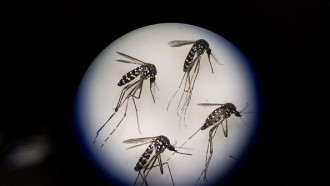
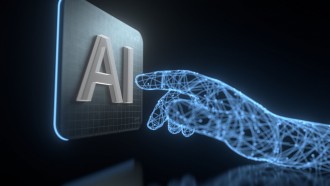
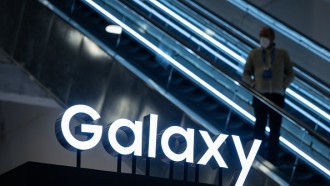
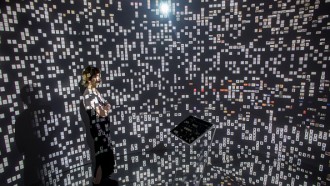
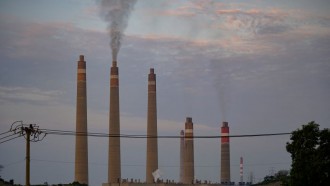




![Upcoming Game Releases that Will Require You at Least 16GB of RAM [2023]](https://1734811051.rsc.cdn77.org/data/thumbs/full/419887/295/166/50/40/upcoming-game-releases-that-will-require-you-at-least-16gb-of-ram-2023.jpg)


